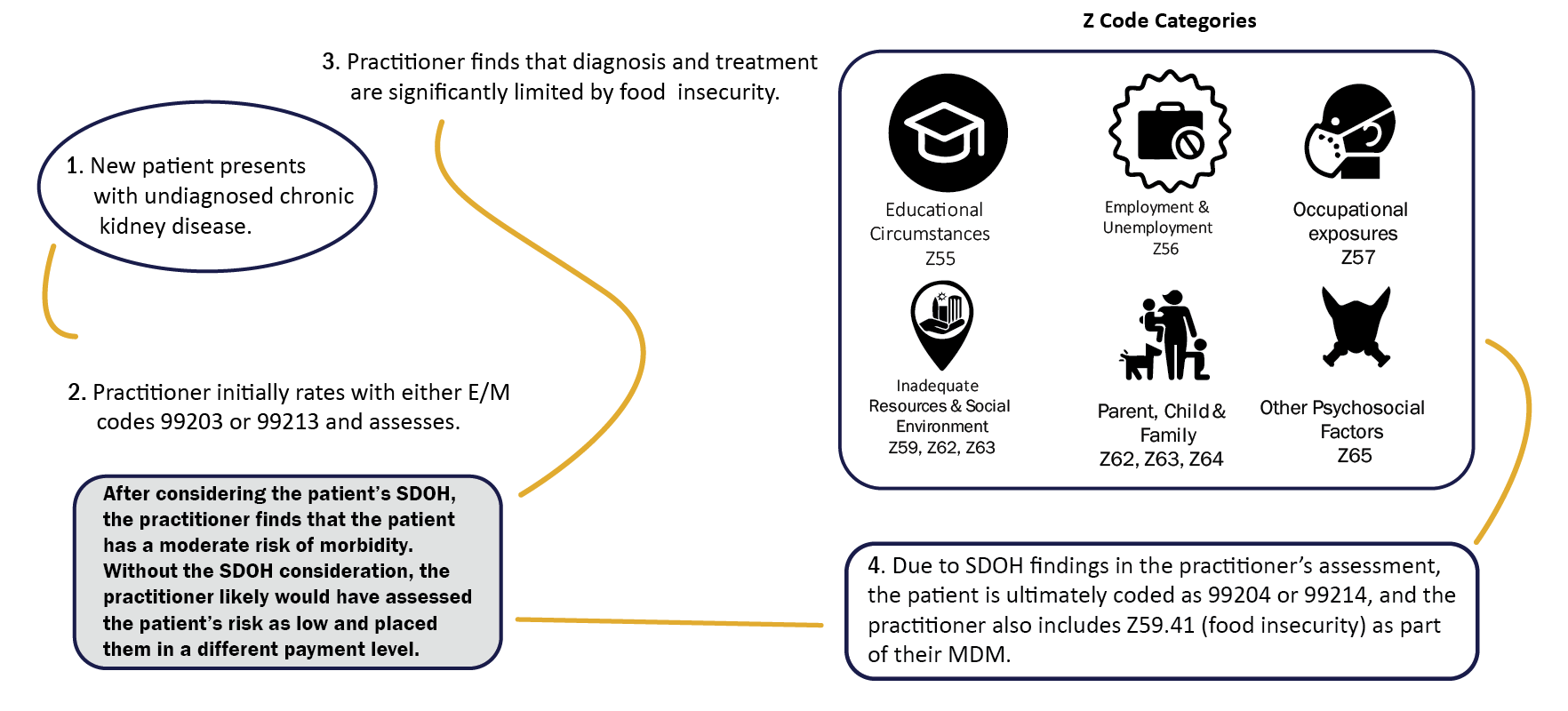Integrating Z Codes with E/M Changes

Integrating Z Codes with E/M Changes Flowchart
The flowchart starts with item 1: New patient presents with undiagnosed chronic kidney disease.
This leads to item 2: Practitioner initially rates with either E/M codes 99203 or 992123 and assesses. After considering the patient’s SDOH, the practitioner finds that the patient has a moderate risk of morbidity. Without the SDOH consideration, the practitioner likely would have assessed the patient’s risk as low and placed them in a different payment level.
This leads to item 3: Practitioner find that diagnosis and treatment are significantly limited by food insecurity.
Item 4 says that due to SDOH findings in the practitioner’s assessment, the patient is ultimately coded as 99204 or 99214, and the practitioner also includes Z59.41 (food insecurity) as part of their MDM.
The flowchart shows several Z codes categories the practitioner could consider, including: educational circumstances, Z55; employment and unemployment, Z56; occupational exposures, Z57; inadequate resources and social environment, Z59, Z62, and Z63; parent, child and family, Z62, Z63, and Z64; and other psychosocial factors, Z65.